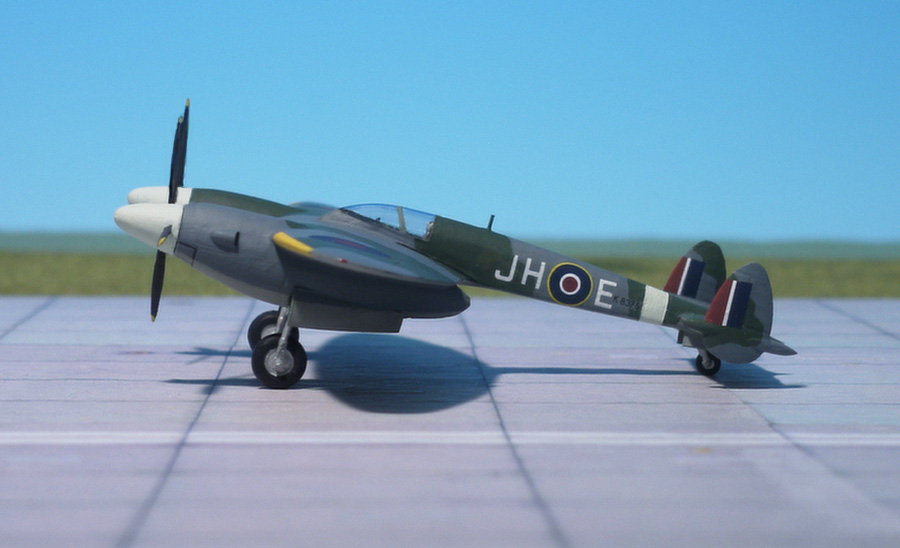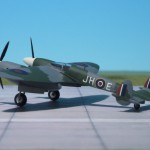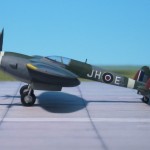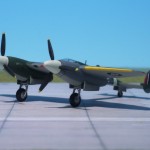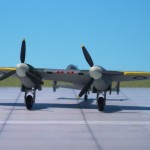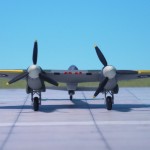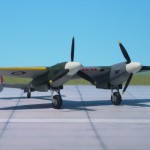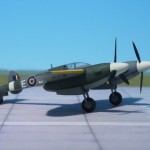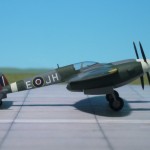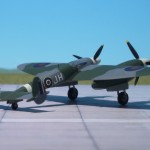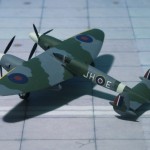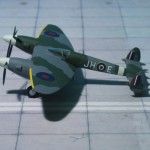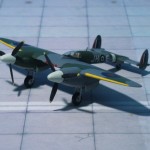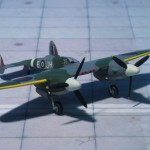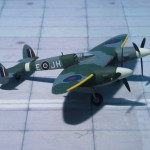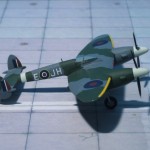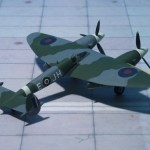TYPE: Fighter, fighter-bomber, project
ACCOMMODATION: Pilot only
POWER PLANT: Two Rolls-Royce Griffin liquid-cooled engines, rated at 1.600 hp each
PERFORMANCE: 504 mph at 15,000 ft (estimated
COMMENT: The Miles M.22 was a single-seat, twin-engine, high performance fighter design originating from Britain at the beginning of WW II. This unique entry was developed in 1939 and eventually offered against Air Ministry Specification F.6/39. The fighter certainly held unique traits about it, particularly for the period, including a streamlined cockpit placement within the wing mainplanes and a complete 10-machinegun-battery for standard armament.
The M.22 was intended to be powered by a pair of underslung Rolls-Royce Griffon piston engines, these embedded in streamlined nacelles at each wing leading edge. The wing mainplanes were elliptical in their general shape familiar to the Supermarine Spitfire fighter and housed the engines and cockpit. The cockpit was centered at the mainplanes center mass with a well-streamed canopy integrated into the rounded fuselage assembly. The fuselage terminated at the extreme rear to which a conventional twin-rudder tailplane arrangement. Ground-running would involve a tail-dragger configuration with the main, single-wheeled legs retracting into each engine nacelle and a tail wheel bringing up the rear. Beyond this, the aircraft was to be built primarily of wood to save on critical resources, metal reserved for the wing spars and other crucial components however.
To complete the design, engineers drew up plans for a “gun nest” to feature all the fixed, forward-firing armament for their M.22. This was to involve no fewer than 10 x 0.303 caliber air-cooled Browning machine guns concentrated at the mainplane’s leading edge just ahead of the cockpit – giving the fighter considerable frontal firepower against any target.
While never built nor ever flying, the M.22 was estimated with a maximum speed of 504 mph at 15.000 ft, a service ceiling nearing 37,000 ft and a rate-of-climb of approximately 5,200 ft/min. The fighter required a cockpit pressurization and had a total length of 33 ft and a wingspan of 39 ft what was smaller than the classic de Havilland DH. 98 Mosquito heavy fighter. Power was to come from 2 x Rolls-Royce Griffon engines of 1.600 hp each driving three-blades propellers (Ref: Military Factory).
